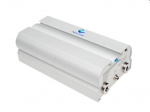Good stuff guys.

I havnt nailed down the entire system yet. I'm torn between filtration & purification before the tank, or after, a combination of the two, or both entirely.
Every option has its benefits and drawbacks. And to be fair, most trips will be filled/refilled for the large part from a municipal water source.
But we do have concerns moving forward, and want our bases covered 100% for water needs. Id love to never such water out of a spigot, if I could.
Options... And keep in mind this is for full-time use. Not seasonal, not weekend warrior.
1.
2-stage pre-filter and purify questionable water sources, trust municipal.
Lessens the need/load on the filtration/purification system, and can be a "portable" setup.
Filters would need to be managed, as they are not in use at all times. *Storage issues.
For filling just need power, pump, and appropriate hoses for surface water.
This keep onboard tank 100% potable.
2.
2-stage pre-filter from any source, be it questionable or not. Carbon block and Purify at point of use.
Filters would need to be managed, as they are not in use at all times. *Storage issues.
A bit more complicated as the system may or may not be redundant.
For filling just need power, pump, and appropriate hoses for surface water.
This keep onboard tank filtered, but not purified.
3.
Sediment filter only (single stage) from surface water. Further filtration and purification at point of use.
Simple, and keeps onboard filters in use at all times. No storage issues.
For filling just need power, pump, and appropriate hoses for surface water.
This also has further potential, as I installed a fill-port topside in the camper at the sink.
We could refill from 5-gallon, 1-gallon, whatever jugs as needed. A great option for say... rainwater collection.
Onboard tank is neither filtered nor purified.



